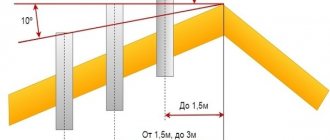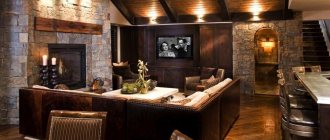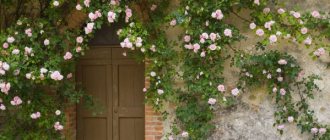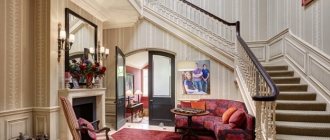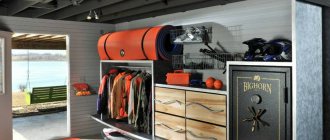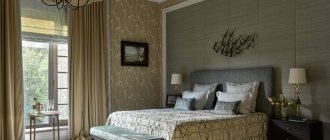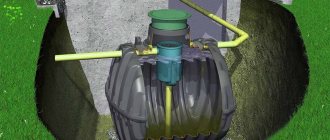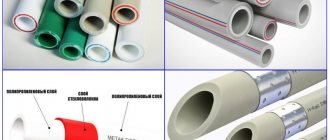When the snow turns white outside the window or the dank gray sky frowns, watering people with its rainy tears, the lack of something bright and summer is especially acute. For example, lush green plants or colorful fragrant flowers. It has long been known that the green “residents” of our homes cope well with the human blues, and they also clean the air in the room. Therefore, a winter garden can be an excellent solution. In a private house, it is much easier to arrange it due to the large spatial possibilities. Where to start, what materials, plants and style to choose - you will learn these and other important aspects from this article.
Winter garden in a private house - how to arrange it?
Greenhouse, winter garden, greenhouse?
The first winter gardens were created by the ancient Egyptians: the richest and most noble of them installed large flowerpots with greenery in their palaces. Over time, the fashion for maintaining a “green oasis” in a residential area appeared among the French and British in the 19th century, and then spread throughout the world. Today, a winter garden in a private house is not uncommon. However, it is important to understand what exactly you are planning to create in your home: a greenhouse, a greenhouse or a real winter garden.
Distinctive features of a winter garden
Table 1. Difference between a winter garden and a greenhouse.
| Design name | Peculiarities |
| Greenhouse | It is placed on the roof of the house or separately from it. Sometimes it may be adjacent to housing. Created for breeding and cultivating fruits, vegetables and flowers, both local and “overseas”. For a greenhouse, it is important to create special conditions, an ecosystem for the comfortable growth of crops. |
| Greenhouse | A mini-greenhouse located separately from the home. Used for growing fruits and vegetables or heat-loving plants. Plant comfort is a priority. Externally, the building is not very attractive, lacks decorations, and is quite budget-friendly. |
| Winter Garden | Most often they are attached to housing and designed in advance. Plants are kept and grown inside, but they are created for people (relaxation, receiving guests). Based on this, the design should have an attractive appearance and be functional inside. |
Beautiful fruits for the winter flower garden
Thunberg barberry fruits
Twigs with red or orange fruits among the snowy garden will definitely attract attention. Use Thunberg barberry (Berberis tunbergii), blood red hawthorn (Crataegus sanguinea) or soft hawthorn (Crataegus submollis), mountain ash (Sorbus aucuparia), small-fruited crabapple (Malus baccata), dog rose (Rosa canina) or rose wrinkled (Rosa rugosa), sea buckthorn (Hippophae rhamniodes). Interesting are the raspberry-colored dry fruits-leaflets collected in corymbs of the Physocarpus opulifolius variety Diabolo.
Fruits of sea buckthorn
Keep in mind that in temperate climates, the scarlet, juicy berries provide food for numerous birds and are unlikely to last until mid-winter. Do not expect that decorative fruits will be the leading element of the winter flower garden; give them an additional, secondary role.
The problem of preserving fruits can be partially solved by hanging bird feeders in the garden and replenishing them regularly. In addition, feeders with an interesting, but not too bright design that frightens birds, diversify the picture, and the chirping birds themselves are a living decoration of the garden.
Birds are a sonorous decoration of the garden
Types of winter garden structures
Before you start creating a home oasis, you need to think through many nuances. First, you need to decide on the type of structure. There are several of them.
- Buffer garden. This is a room adjacent to the house (often a veranda). It can be entered both from the home and from the yard. Typically, such a building is a connecting link between the street and the house; it has a rectangular or square shape (it can also be corner). They are used not only as a resting place, but also as a hallway or terrace. The advantage of this design is the ease of creation: communications, heating and electricity are easy to install from the house, the building is easy to maintain. The downside is the lack of ventilation, sudden temperature changes (at night in the buffer garden it is much colder), not every plant can survive there.
There is an entrance to the buffer garden both from the street and from the house - Residential garden. A great option for green lovers. This is a full-fledged living space in which you can place a dining room, living room, and recreation area. In such a garden it is comfortable for both plants and people. You can create a residential garden by planning it in advance (if the house is being built), or by placing it in the selected room. The main requirement is the presence of large window openings for sufficient daylight.
There can be a living room in the winter garden - Separate building . It is also called a greenhouse winter garden. If your plot is large, you can afford to put a spacious winter garden on it at a distance from the house itself.
It is important that the place for construction is sunny. It is equipped with heat, light and running water. The greenhouse winter garden can be connected to the house and other areas of the site with beautiful paths. The option is not the easiest and very expensive.
Such a building will decorate the site and an excellent solution for landscape design.
Important: whatever type of structure, it must let in enough daylight for the flowers to grow healthy.
Decorative fruits and inflorescences for the winter flower garden
Tree hydrangea inflorescences. Photo by the author
Plants with strong stems and dry, hard fruits or inflorescences remain decorative for a long time.
Tree hydrangea (Hydrangea ardorescens), familiar to many gardeners, does not lose its large hemispherical inflorescences in the fall. They mainly consist of sterile petal-like sepals and persist until spring. The plant is winter-hardy, recovers well if it freezes, and requires annual partial pruning. Install supports and secure the bush so that it does not fall apart under the weight of snow; in this case, it will serve as one of the verticals of the winter flower garden.
Biennial teasel (Dipsacus sativus) with rigid spiny stems up to 2 m high, in the second year of life it forms large cylindrical inflorescences up to 12 cm long, bearing bract scales with long hard awns. The plant is called pile cone and was formerly widely grown and used for textile processing. Other species with beautiful “cones” are also grown - teasel (D.sylvestris) and teasel (D. laciniatus). In late autumn, teasels darken, but are preserved in flower beds thanks to their strong stem and spinous cones. The plants are unpretentious, but grow best in open areas with loose, fertile soil.
Teasel cone
In the company of inflexible perennials, you can add eryngium with dense capitate inflorescences, which are surrounded by hard involucre leaves with small spines. In the middle zone, you can easily grow alpine eryngium (Eryngium alpinum) variety Blue Star with silver-blue large inflorescences surrounded by intricately incised, feathery bracts. The unpretentious flat-leaved eryngium with round or ovoid inflorescences about 2 cm in diameter is represented by several varieties: Blue Cap - 80 cm high, with blue inflorescences and bluish-green leaves; White Glitter – 90 cm high, with white inflorescences; compact varieties Blue Dwarf, 20-50 cm high, with blue inflorescences and involucre leaves, and Blue Hobbit, up to 30 cm high, with silver stems and blue inflorescences. Blueheads are unpretentious, but love sunny places and well-drained soils.
Inflorescences of Eryngium planum
Sturdy stems and spherical inflorescences of Echinops ritro and Echinops exaltatus will complement the picture of the winter flower garden. The first type is up to 50 cm high, the inflorescences are about 4 cm in diameter, the second is more powerful, up to 1.5 m high, the inflorescences are up to 6 cm in diameter. In nature, the plants are found in steppe and forest-steppe regions, but are successfully cultivated in the middle zone. When planting, avoid shaded areas with damp and acidic soils. Plants bloom in the second year after sowing.
Interesting touches to the flower garden can be added by plants from the Asteraceae family with durable inflorescences that remain on the stems after withering. Common yarrow (Achillea millefolium) has numerous small baskets collected in a large corymbose inflorescence; meadowsweet yarrow (A. filipendulina) is distinguished by a larger, dense and dense inflorescence. Helenium autumnale, after the bright marginal reed flowers have withered, retains convex basket-buttons for a long time. Purple coneflower (Echinacea purperea) holds its shape well thanks to the spiny bracts surrounding the tubular flowers, collected in a spherical basket. All of the plants listed are common inhabitants of our flower beds; growing them is not difficult; you just need to plant them for viewing in winter.
Echinacea purpurea baskets
The bright, red lanterns of the common physalis (Physalis alkekengii) will attract the eye until late autumn. Then the cups become openwork, mesh, and a spherical red or orange berry is visible through them.
Fruits of Physalis vulgare
Additional details of the composition will be given by dry inflorescences of lovage (Levisticum officinale), aniseed lofant (Agastache foeniculum), and translucent silvery partitions of the fruits of the reviving moonflower (Lunaria rediviva).
Umbrellas of Lovage officinalis
Choosing a place
If you are planning to place the structure of the future winter garden in a house extension, it will be very important to decide on which side it is best to do this: southern, northern, eastern or western. Each option has certain pros and cons.
- North . The location is not the best, since the garden will quickly release the accumulated heat to the outside. If there is no option to choose the other side, you need to take care of a good heating system.
- South . The good side is during the cold season, when daylight hours are short and there is little sun. On warm summer days, the plants will be too hot and stuffy there, the owner will have to water them more often, provide shading and access to fresh air.
- East . This is the most successful location option: in the first half of the day the plants will be provided with light and warmth, and in the remaining time the flowers will “rest” from the sun. Thus, overheating of crops will be excluded.
- West . The solution is also suitable: the heat accumulated during the day is retained throughout the night. This is good for winter, but in summer you will have to provide additional ventilation and good watering.
Cardinal directions for the winter garden
For both health and soul
Making a winter garden with a swimming pool on your dacha or garden plot means combining business with pleasure. Everyone wants to enjoy green, fragrant, flowering plants not only in the summer, but all year round. When there is a monochromatic winter landscape around, plunging into the atmosphere of summer is good for both health and mood in general. And if there is a swimming pool nearby all year round, in which you can relieve stress after a hard day, then this is the ultimate dream. And swimming and enjoying green flowers during blizzards and cold is the key to health. Longevity and a positive attitude. Are you planning to combine a winter garden with a swimming pool? Find out from our article how to build a winter garden with a swimming pool yourself.
Choosing a form
At the stage of planning a winter garden, it is very important to decide on the optimal form of construction for this room. A separate building can be anything: a sphere, a hemisphere, a cylinder, a cube. However, it is usually rarely installed separately, due to the high price and complexity of implementation.
Most often, a winter garden is part of a living space, in which case its shape also differs. There may be several options:
- a rectangular extension with a pitched roof (the simplest and most popular);
- a structure adjacent to the outer corner of a residential building;
- quarter-polygon (extension to the inner corner of the house);
- structure with a combined roof;
- bay window design;
- L-shaped extension with a gable roof.
Types of structures
Please note: you can design the building the way you need it.
Selecting materials
The inside of the winter garden should be comfortable not only for people, but also for plants. This determines the specific choice of materials for walls and roofs: these structural elements should provide your crops with maximum access to light. Based on this, glass, polycarbonate, double-glazed windows, and sometimes plexiglass are most often used when finishing walls and roof coverings. Let's look at the advantages and disadvantages of each material.
Glass
This type of cladding is the most used. Glass is so popular due to a number of significant advantages:
- high load-bearing capacity;
- aesthetics;
- light transmittance (98%);
- fast heat transfer.
These positive properties do not exclude some disadvantages. Glass is a fragile, quite expensive and difficult to work material.
Glass cladding looks impressive
Polycarbonate
The most modern and technological solution, which is popular in the field of construction and finishing. It has many advantages:
- budget;
- easy to process;
- plastic (can be bent);
- moisture resistant;
- resistant to moisture, fungus, corrosion;
- easy.
Please note: polycarbonate has a top layer of protection that does not allow moisture to pass through. This makes it virtually invulnerable to precipitation.
Polycarbonate would be an ideal material if not for some disadvantages:
- low thermal efficiency (good heating will be needed);
- transmits less light than glass (88%).
Polycarbonate sheathing
Double-glazed windows
Today, when creating winter gardens, double-glazed windows have become more often used, despite their high cost and heavy weight. This popularity is due to their high light transmittance (like glass) and excellent heat retention. Also, if your budget allows, you can opt for energy-saving double-glazed windows: they will help significantly save heat.
Double-glazed windows
Plexiglas
As a rule, it is not used as an independent one. Suitable for side walls in combination with other materials. It has a significant disadvantage - it is heavy, which makes you think about a more durable frame.
Foundation, floor and walls of the structure
The very first stage of creating a winter garden is pouring the foundation of any durable structure, that is, the foundation.
Important: the winter garden room needs a foundation, since heavy pots with plants will create a huge load, and a structure without a foundation will simply sag.
The most convenient and widespread technology for pouring is the strip foundation technology. It is important to follow the basic steps here:
- Apply markings and dig a trench (depth - 50 cm, width - 10-15 cm).
Dig a trench - Install reinforcement (will strengthen the foundation).
- Place a mixture of gravel and sand at the bottom.
Install boards or special thermal insulation on the sides of the trench - Fill the hole with cement (“M-200”, “M-300”).
- Lay a layer of roofing felt (waterproofing) on top of the cement.
Pillow for strip foundation - Wait for the mass to completely harden (15 days).
Attention: please note that pouring and drying the foundation will take 17-20 days.
Next you need to decide on the floor. Initially it is poured with concrete, but after complete hardening it needs to be covered with something. There are several options here:
- ceramic tiles;
- natural stone;
- fake diamond;
- porcelain stoneware;
- boards (rarely).
Based on preferences and budget, everyone decides for themselves what exactly to cover the floor in their winter garden.
Natural stone flooring is beautiful and effective
Herbs for the winter flower garden
Miscanthus chinensis
Many herbaceous perennials retain decorative qualities in winter thanks to their fruits and dry inflorescences with different textures.
Cereals remain the most attractive for a long time. Chinese miscanthus (Miscanthus sinensis), 1.5-2 m high, stably supports a compact clump, openwork silver panicles reach a length of 15-30 cm. Feather grass (Stipa pinnata) with long awns covered with soft hairs is very impressive, but has average winter hardiness.
feather grass
Quite stable in winter are maned barley (Hordeun jubatum) with lush, lacy spikelets, graceful blue molinia (Molinia caerulea), gray fescue (Festuca cinerea), forming low, lush silver-blue bushes with numerous towering panicles.
Gray fescue
Frame and roof
In appearance, a winter garden may look fragile due to its transparency and even some airiness. However, it’s good if she only seems like one. To withstand winds, snowfalls and the scorching sun, the structure must be strong and reliable. For this, it is also important to choose a good frame material. There are many options, let's look at their brief descriptions.
Table 2. Types of frame materials.
| Material name | Characteristic |
| Aluminum profile | The most popular version of the frame has many advantages: - lightweight; - durable; - durable; - not subject to rust. The main disadvantage of an aluminum profile is its high throughput (it does not retain heat), which means you will have to take care of thermal protection. |
| Tree | Wood is often combined with brick, but timber is not a very popular material because: - it can rot; - changes shape and size with temperature fluctuations; - afraid of moisture; - expensive and complicated. If you choose durable and high-quality wood, the building will be durable, but its cost will increase significantly. |
| Steel | An undeniable advantage of a steel frame is its high strength and durability. But the disadvantages are also significant: - very heavy weight; - high price; - susceptible to corrosion. |
| Metal-plastic | Good material, characterized by such advantages as: - resistance to UV rays; — excellent thermal insulation; — high noise insulation. |
| Brick | Brick is used quite often to create a frame base. Pros: - strength; — moisture resistance; — ease of installation; - durability. However, the material is heavy and quite expensive. |
Aluminum profile frame is very popular.
Next, everything will depend on the selected materials and the type of future structure. For fastening, you can use a welding machine (if the frame is made of steel), a screwdriver, a drill, etc. Parts can be fastened with nails, dowels, and self-tapping screws.
After the frame is made, the sheathing begins. The material from which the structure will be sheathed will determine the pitch between the frame guides.
Please note: do not forget about the joints between the walls of the home and the home “oasis” - they need to be treated with insulating foam.
If we talk about the roof of the future winter garden, it is also important to choose the right material. Of all the above, glass is the least suitable: it may not withstand the weight of snow that falls in winter. The best option is polycarbonate or double-glazed windows (2 or 3 chamber).
Attention: do not choose double-glazed windows with a glass thickness of more than 5 mm, since such material is too heavy for the roof.
When arranging a roof, give preference to a configuration with a slope.
A sloped roof will be an excellent solution to prevent precipitation from accumulating on the roof surface and preventing the penetration of light.
Video - Winter garden assembly process
Plants with unusual branches for the winter flower garden
Common hazel Contorta
Some trees and shrubs with twisting shoots have an unusual appearance. Common hazel (Corylus avellana) form Contorta with twisted, strongly intertwined branches, characterized by slow growth, the maximum height of the bush is about 5 m. Hazel is undemanding to growing conditions, frost-resistant, and shade-tolerant.
The Matsuda willow form (Salix matsudana f. tortuosa) has a spreading pyramidal crown with spirally twisted shoots. A hybrid of Matsuda willow and Babylonian willow, it has a weeping crown with yellowish-red curved shoots. These species are undemanding to soil, moisture-loving, but have average winter hardiness and can freeze out in severe winters. Low-growing willow hybrids, united under the name Sverdlovsk sinuous, reach a height of 2-3 m. Hybrids created by domestic breeder V.I. Shaburov, showed good stability in harsh conditions.
Iwa Matsuda
Choosing a heating system
Sunlight is the source of life and heat for plants. However, in cold weather, for their existence and growth, as well as for the comfortable stay of people in the winter garden, it is necessary to install an optimal heating system. The choice will depend on the following factors:
- room area;
- plant species;
- frequency of people being in the room.
The assortment of modern stores allows you to make the right choice from many existing options.
Operating principle of an electric convector
Table 3. Types of heating devices and systems.
| Name | Device properties |
| Electric heaters | — easy to install; - mobile; — quickly heats the air; - available; — high electricity consumption; - dry the air. |
| Split systems | — uniform and fast heating of the room; - ability to regulate temperature; — do not affect air humidity; - high price; — electricity costs; - not suitable for northern regions. |
| Water heating (from the house heating system) | — temperature stability; — minimal costs; — identical microclimate; - installation difficulties (it is better to do this at the initial stage, when the house is still under construction). |
| Warm floor | — uniform heating; — convenience and comfort; — prevent freezing of the floor and walls; - high price; — complexity of repair; - Difficult to install. |
| Ural Federal District | — heat the room evenly and quickly; — it is possible to adjust the temperature; - will not affect air humidity; - are expensive; - not suitable for large rooms. |
| Heating from the stove | - low cost; — uneven heat distribution; — danger of fire (in the absence of a person in the room). |
Heating systems can be easily combined with each other
No. 10. Protection from excess light
Don't forget that in summer there can be too much light, especially if the garden faces south, so it is necessary to provide options for protection from excess solar radiation. This includes the following activities:
- internal protection is curtains and blinds. It is better to use fabric, plastic and bamboo - aluminum can heat up excessively and will make noise when the fans are running. In this way, it will be possible to delay up to 40% of the sun's rays, but heating cannot be avoided;
- external protection allows you to provide 90% protection. Awnings and awnings for such protection are made of special light-reflecting fabric, so that neither excess light nor excess heat will enter the winter garden. For hot southern regions, such protection is especially necessary if shade-loving delicate plants are grown.
Choosing a ventilation system
Any room needs regular ventilation, and the winter garden needs constant ventilation, because the green “residents” of your cozy corner need fresh air. He can get from the street inside (and vice versa) in two ways.
- Natural . Simply put, windows need to be provided with vents and transoms. This is a cheap option, there is little noise from such ventilation, and by opening and closing the holes you can easily regulate the air flow. However, such a system will fail in the warm season, when the temperature difference is minimal.
- Mechanical . Involves the use of technology, such as fans or more complex systems. They will create an excellent microclimate, but noise may interfere with your relaxation. It is also worth considering installation costs and electricity bills.
Ventilation diagram in a house with a winter garden
Climatic conditions
So, the construction of the garden room has been completed, all that remains is to connect communications to the building and plant the plants. In order for flowers and plantings to feel comfortable, it is necessary to take care of creating an ideal microclimate.
When a winter garden is located in a house, it is much easier to monitor the climate in it, and it is, therefore, as close to comfortable as possible.
If the corner of nature is located outside the living space, then in this case it is necessary to take care of normalizing the following parameters:
- Air parameters.
- Light.
- Air exchange.
- Heating.
Choosing lighting
The walls and roof of the winter garden are sheathed with transparent material, which means there should be no problems with lighting. Still, plants often need additional light. There are a large number of sources of artificial lighting: mercury, sodium, fluorescent, LED, metal halide, phyto-lamps and incandescent lamps. Of these, fluorescent ones are the most popular because they save energy, provide excellent illumination and have low heat dissipation.
Phyto-lamps are especially good: they have a positive effect on photosynthesis. The downside of this option is its price.
Think about how you can protect your flowers: curtains, blinds, awnings, awnings
Don’t forget that too much light is also bad.
Bushes and trees with bright bark
White dogwood Sibirica
Shrubs with bright original bark will provide a welcome splash of color against the white background of the winter garden. There are enough suitable breeds.
Take a closer look at the white dogwood (Cornus alba), its cherry-red shoots about 2 m high are very impressive. If you plan to achieve the most attractive appearance in winter, trim the bush regularly, this will stimulate the appearance of young shoots, which usually have the brightest colors. The variety Sibirica with coral-red bark is widespread.
The shoots of red deer (Cornus sanguinea) 1.5-1.8 m high have a blood-red color with an orange-yellow tint, the shrub is unpretentious, grows well in partial shade, the varieties Magic Flame and Winter Beauty are popular.
The shoot dogwood (Cornus stolonifera) has several varieties with different bark colors. In the Flaviramea variety it is greenish-yellow, in the Cardinal variety it is bright red. There are compact varieties - Kelsey, 70-80 cm high and twice as large in diameter. The bark of young shoots is red-brown, while that of old shoots is olive-green.
Young shoots of white willow (Salix alba) are attractive because of their bright color, which varies from yellow-brown to orange in the Vitellina variety.
White willow Vitellina
When planning to plant trees and shrubs with interesting bark, keep in mind that they will create the desired effect only in a group or bouquet planting; a single tree is not so attractive. Remember to prune them regularly to encourage the growth of brightly colored young shoots.
Selecting and combining plants
When choosing plants, you will have to rely not only on your own preferences and taste. It is very important that the cultures are combined with each other, because they will be in the same room.
According to zones and conditions, plants are divided into:
- tropics;
- subtropics;
- desert;
- humid tropics.
It is unlikely that you will be able to combine flowers from different climatic zones, so make sure that the requirements are approximately the same.
Do not forget about the location of pots with plants: the sunny side is an excellent place for light-loving crops
Winter green plants under the snow
Bergenia cordate leaves. Photo by the author
Several species of perennial herbaceous plants with evergreen leaves have taken root well in our gardens. The unpretentious heart-leaved bergenia (Bergenia cordifolia) forms strong bushes with large, powerful leaves. Graceful, trailing periwinkle (Vinca minor) weaves through shady areas. Pachysandra terminalis, with carved leaves arranged in tiers on low vertical shoots, lies in carpets in moist areas in partial shade. European hoofweed (Asarum europaeum) with kidney-shaped leaves forms dense coverings; dry hexagonal seed pods provide an additional effect. Annual ornamental cabbage (Brassica oleracea var. acephala) is frost-resistant; its lush heads of cabbage with curly leaves are colored bluish-green, white, pink, red and purple. These plants will not be visible under the heavy February snowdrifts, but at the beginning of winter, while the snow layer is small, they will delight you with fresh greenery and bright colors.
About watering plants
Is your garden small and compact? Then, in order to water all the flowers, you will need a basic watering can, a spray bottle and a schedule for adding water. But in the case of a larger room, watering can become a problem and take a lot of effort and time. An excellent solution is a drip system: pre-installed hoses will ensure a regular flow of liquid into the substrate, and special sensors will be responsible for the humidity level.
For additional humidity and beauty, you can install an artificial pond in the garden.
Garden design: zoning and style
Upon completion of construction and installation work, it becomes necessary to plan the interior arrangement of the premises. This is where such an effective technique as zoning comes to the rescue, i.e. dividing the winter garden space into functional zones. There are several of them.
- Decorative . This is a place reserved for plants and various decorative elements (fountain, aquarium, figurines, etc.).
- Service . Fertilizers, equipment, and other things useful in caring for flowers will be stored here.
- Recreational – recreation area. For its arrangement, sofas, armchairs, hammocks and tables are used.
- Communicative . Such a zone exists in large rooms. These are places for alleys, paths, paths that will connect all other areas with each other.
Zoning a winter garden
When it comes to decorating a garden in any style, you should also start from your own tastes. The common features of a particular style will help create an aesthetically attractive cozy corner.
- Classic. This is the predominance of symmetry, pompous figurines in the form of living creatures, people, fountains in the form of geometric figures.
Winter garden in a classic style - High tech. A winter garden in this style is characterized by a combination of metal, concrete and plants, laconic and precise lines.
High-tech style - Eco style. Naturalness, naturalness. Select plants that are typical for your region. Figuratively speaking, this is a piece of the garden “under the hood” - this should be the impression of your winter garden.
Eco style - Country. Similar to the previous style. These are natural decorations (vines, stumps, clay pots) and the simplest possible local crops.
Country - Japanese style. Very beautiful, with his own philosophy. The main elements are stones, earth/wood, water.
Winter garden in Japanese style
Main characteristics and features
A winter garden is a complex system that includes a lot of engineering and technological solutions. The design allows you to create an optimal microclimate for a variety of plants and provide proper care for them. In addition, a “green” room in an apartment or country house can become a place for a comfortable pastime, rest and relaxation.
Details you shouldn't forget
In conclusion, we will give some tips that may be useful in planning and arranging a home “oasis”:
- calculate the approximate cost of the planned structure;
- determine the location of outlets in advance;
- choose natural materials for furniture (wicker, rattan, wood);
- plan methods and methods of planting;
- take care of fertilizers;
- Shade the garden in hot weather.
A mirror will help to visually enlarge the space of a small room.
Master Class. Example of winter garden construction
So, now you know about all the winter garden systems and its internal structure, and therefore you can proceed directly to the construction process.
Important when building a winter garden
Step one . First, determine which side of the house the building will be located on. It is better to give preference to the western or eastern wall. Also, the winter garden can be located from the south, but in this case a serious ventilation system will be needed to maintain the optimal temperature inside in the summer.
Step two . The construction site is cleared of plants, stones and debris. After this, the foundation is poured - a shallow shallow foundation.
Step three . The lower frame frame is mounted on the base, and there must be a waterproofing layer on it. The position of the lower harness is controlled using a tape measure, stretched ropes and a building level.
Installation of the bottom trim
Step four . Horizontal/vertical elements of the future frame are mounted, which will serve as the walls of the garden. It is important that all connections are secure.
Installation of vertical frame elements
Installation of horizontal frame elements
Step five . Next, the top frame is mounted and the roof beams are installed. It is important that all wooden elements used are pre-treated with an antiseptic impregnation.
Installation of the top trim
Installing roof beams
Step six . Rubber sealing profiles are prepared and glazing of the structure begins. Sheathing elements are transferred using vacuum suction cups - this is not only safe, but also convenient.
Glazing of the winter garden
Glazing process
Step seven . On the outside, the seals are covered with an aluminum profile, which is necessary for protection from moisture and sunlight.
Glazing is almost complete
Installation of aluminum profiles
Step eight . The cornice profile is installed. It is advisable to additionally equip it with a drain.
It is advisable to supplement the cornice profile with a drain
Step nine . When the construction of the garden is completed, water and electricity are supplied to it, and irrigation and ventilation systems are equipped. Places for plants are being marked out and the interior decoration of the winter garden is being carried out.
On a note! As a result, you will get a comfortable and beautiful room where you can spend your free time surrounded by your favorite plants throughout the year.
